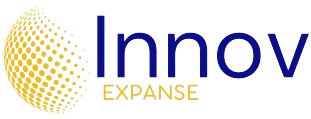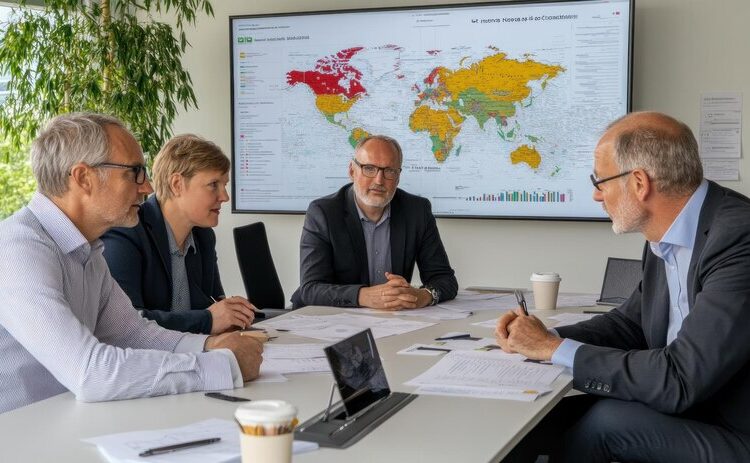Key Takeaways:
- Understanding cultural nuances is crucial for global meeting planning; communication styles and customs vary significantly across regions.
- Careful scheduling across time zones is essential; utilizing global scheduling tools can aid in accommodating all participants.
- Be aware of legal considerations when planning international meetings; ensure compliance with local laws and regulations.
- Create a well-structured yet flexible agenda to foster collaboration and engagement among attendees.
- Incorporate breaks and networking opportunities to enhance participant interaction and relationship-building.
- Leverage technology for real-time adjustments and to foster interactive participation during meetings.
- When choosing meeting formats, consider participant preferences and the potential advantages of each format.
- Select unique venues that can enhance creativity and leave a lasting impression on attendees.
- Ensure inclusivity in venue selection by accommodating diverse needs and following universal design principles.
- Encourage active participation through interactive formats, promoting collaboration, and critical thinking.
- Utilize gamification strategies to elevate engagement and make meetings enjoyable and memorable.
- Gather feedback post-meeting to continuously improve planning and to enhance the attendee experience.
Understanding the Global Landscape of Meetings
Regional Differences: Embracing Cultural Nuances
In today’s digitally connected world, comprehending regional variances in conventions and societal norms is essential for successful global meeting planning. Distinctive customs, traditions, and communication styles characterize each area of the planet, profoundly impacting gathering results. Whereas participants from North America often value direct interactions and speedy decision-making, counterparts from Asia may prefer a consensus-driven method that underscores relationships and harmony over immediate outcomes. Recognition of these disparities allows organizers to tailor their approaches to ensure all attendees feel respected and included. Moreover, subtle cues like body language, gestures, and even the importance afforded meals can drastically influence involvement and outcomes. Organizers must invest time in cultural education or advisory services offering insights into these intricate differences. Familiarizing oneself with cultural dimensions from frameworks like Hofstede, such as individualism versus collectivism or risk aversion, also serves as a commendable resource for navigating societal preferences in conference environments.
Time Zones: The Tricky Dance of Scheduling
Scheduling international gatherings across disparate time zones is one of the most intricate puzzles global coordinators regularly face. The globe is split into innumerable time regions, and accounting for daylight savings variations adds another layer of intricacy. A meeting that works for members in New York could be in the midst of darkness for counterparts in Tokyo. Therefore, it is vital to utilize scheduling tools intended with a worldwide viewpoint, particularly those that automatically adjust for time zones like World Time Buddy or Time Zone Converter. Furthermore, comprehending the preferences of diverse areas concerning meeting times can help cultivate a more inclusive atmosphere. For example, some societies may prefer mornings meetings, whereas others might favor late afternoons. Clear communication about the time zone to all participants well in advance can also enhance attendance and involvement. Lastly, employing characteristics like alternating meeting times whenever feasible will demonstrate empathy and respect towards all participants’ situations.
Legal Considerations: Navigating International Regulations
Planning an international gathering necessitates a cautious strategy when navigating regulatory nuances across borders. Legal considerations encompass a vast spectrum: from ensuring compliance with local rules governing events, licensing, and liability coverage to comprehending employment statutes impacting overseas team members’ attendance. Moreover, data protection statutes, such as Europe’s General Data Protection Regulation, require examination—particularly for amassing attendee particulars. Organizers ought to self-educate on disclosures necessitated and how information can be stored and processed. Retaining legal counsel well-versed in cross-border conference directives can mitigate risks while warranting adherence to local conventions and global law. In today’s globe, the magnitude of establishing a risk administration plan cannot be overstated, for it provides a framework for responding to unforeseen legal challenges that may surface, thus safeguarding an occasion’s integrity and accomplishment.
Crafting the Perfect Agenda: Structure Meets Flexibility
The Art of Prioritization: What to Focus On?
Designing an engaging yet efficient agenda is pivotal in modern conference planning. Determining priority calls for discerning which topics warrant intensive discussion and which may settle for brief updates. Firstly, define the meeting’s aim – is the objective to make decisions, share information or promote collaboration? This clarity will guide prioritizing agenda items. Consider dividing the agenda into essential topics necessitating thorough examination and ancillary topics appropriate for succinct statements. Now, balance is key. While a rigid structure promises efficiency, permitted spontaneity can birth invaluable insights and foster rapport amongst attendees. An effective approach incorporates buffer periods between sessions allowing for discussion and new topics to organically emerge, cultivating an air conducive to cooperation and creativity. Interweaving structure with flexibility architects an agenda accommodating diverse perspectives while accomplishing shared objectives.
Incorporating Breaks and Networking Opportunities
While lectures and demonstrations often comprise conferences, incorporating breaks and mingling is equally vital. These intervals serve multiple uses; they help sustain high enthusiasm, decrease data overload, and foster bond-building among attendees. The aim is to generate an environment where individuals can connect and participate on a personal level, which can be invaluable in a globally distributed team. Consider organizing formal networking sessions, split groups, or coffee interruptions dedicated to casual interactions. Relying on the meeting format, the inclusion of team-building activities can also offer an amusing and efficient method to deepen connections. Bear in mind that attendees may originate from diverse backgrounds, and supplying an assortment of networking settings—ranging from arranged to informal—allows everyone to participate in ways they feel most at ease. In the end, well-timed breaks are not a distraction from the meeting but rather an extension of it, producing space for innovation and collaboration.
Utilizing Technology for Real-Time Adjustments
The progression of technology has revolutionized the way gatherings are conducted, particularly in the global sphere. Utilizing tools such as real-time polling, shared digital platforms, and virtual meeting tools (like Zoom and Microsoft Teams) empowers planners to adapt instantly to the dynamics of the gathering. Incorporating live feedback mechanisms enables hosts to gauge the room’s energy and adjust the agenda in real-time, whether by extending discussions where engagement is high or quickly shifting gears if a topic isn’t resonating. Additionally, recording gatherings for those who cannot attend live provides an inclusive solution while maximizing participants’ overall experience. Furthermore, Web-based collaboration tools such as Miro or Google Workspace foster interactive participation even from remote attendees. Adopting a technology-enhanced approach creates a modern, dynamic atmosphere, ensuring that discussions remain productive and centered around participant needs.
Innovative Venue Selection: Beyond the Ordinary
Virtual vs. In-Person: Choosing the Right Format
When deciding on a meeting format, planners must consider the unique advantages and challenges of virtual, hybrid, and in-person options. Remote communication tools now allow worldwide connections at minimal cost, yet face-to-face interactions remain pivotal for rapport-building and imaginative brainstorms. Location influences engagement significantly. Hybrid gatherings fuse virtual and physical elements, letting distant attendees participate while fostering rich discussion among on-site colleagues. Accessibility and inclusion matters too; a format accommodating all backgrounds ensures an engaging experience.
Unique Locations: Making a Statement with Your Choices
Rather than routine conference spaces, unusual venues spark inspiration through sensory immersion. Galleries, historic landmarks, resorts transform meetings memorably. Such atmospheric settings cultivate creativity, motivating novel perspectives. Naturally, practical details also decide a location’s feasibility. Amenities like wireless, presentations gear, dietary-conscious catering streamline logistics. Local culture provides authentic appreciation, bonding attendees through shared revelation. Convenience shouldn’t exclude potential members; ease of travel facilitates maximum involvement.
Accessibility for All: Ensuring Inclusivity in Venue Selection
Making events accessible goes beyond physical amenities to allowing everyone to fully participate. Factors like finding places with wheelchair entry and sources in different formats respecting sensory sensitivities mean planners must consider inclusion. Universal design guiding principles should guarantee needs of all, like differing skills, are regarded. Asking attendees beforehand about personal requirements can ensure comfort and belonging for all. Venues emphasizing welcoming environments can also foster inclusive atmospheres. Services like multilingual assistance for international guests or sign language interpreters exhibit dedication to acceptance. Ultimately, an inviting ambiance for people enhances experiences and represents an organization’s values and mission of community.
Engagement Strategies: Keeping Attendees Invested
Interactive Formats: Turning Passive Participation into Active Engagement
One-way presentations where audiences passively learn are outdated. Switching approaches to promote hands-on involvement through workshops, roundtable discussions, and breakaway sessions invites contributions. Applying the “4Cs” framework – collaboration, communication, inventiveness, and critical reasoning – can establish grounds for engagement. Involving attendees in problem-solving, dialogues, and ideation ensures voices are heard and valued. To sustain interest throughout, organizers can introduce unexpected elements like guest speakers or interactive demos sparking curiosity. Adopting various participatory techniques cultivates a lively air, motivating attendees to invest in outcomes while fostering camaraderie and team effort.
Utilizing Gamification to Elevate the Experience
Implementing gamification at meetings can significantly improve attendees’ experience through interactive engagement spawned by competitive excitement. Simple yet engaging approaches like real-time quizzes and challenges woven throughout the agenda harness peoples’ innate playfulness, gaining buy-in while reinforcing messages. Platforms offering instant polling allow spontaneity which heightens fun, a proven methodology for better retention according to research on interactive learning. Recognizing participation through rewards like applause or tokens further inspires involvement from all, transforming passive observers into energized collaborators.
Gathering Feedback: Continuous Improvement for Future Events
Gathering perspectives post-event represents a critical step for continuous refinement, avoiding future weaknesses. Surveys, interviews or open discussions provide a wellspring of firsthand perspectives on what succeeded and what merits adjustment. Considering mixed data collection including quantifiable and qualitative viewpoints offers a rounded picture of satisfaction. Metrics such as engagement levels, turnout and remarks constitute evidence guiding optimization. Soliciting attendee input lends them stakeholder status, cultivating loyalty among occasional guests. Heeding these lessons bolsters reputation as an adaptive planner able to craft exceptional experiences through an ongoing improvement process.




0 Comments